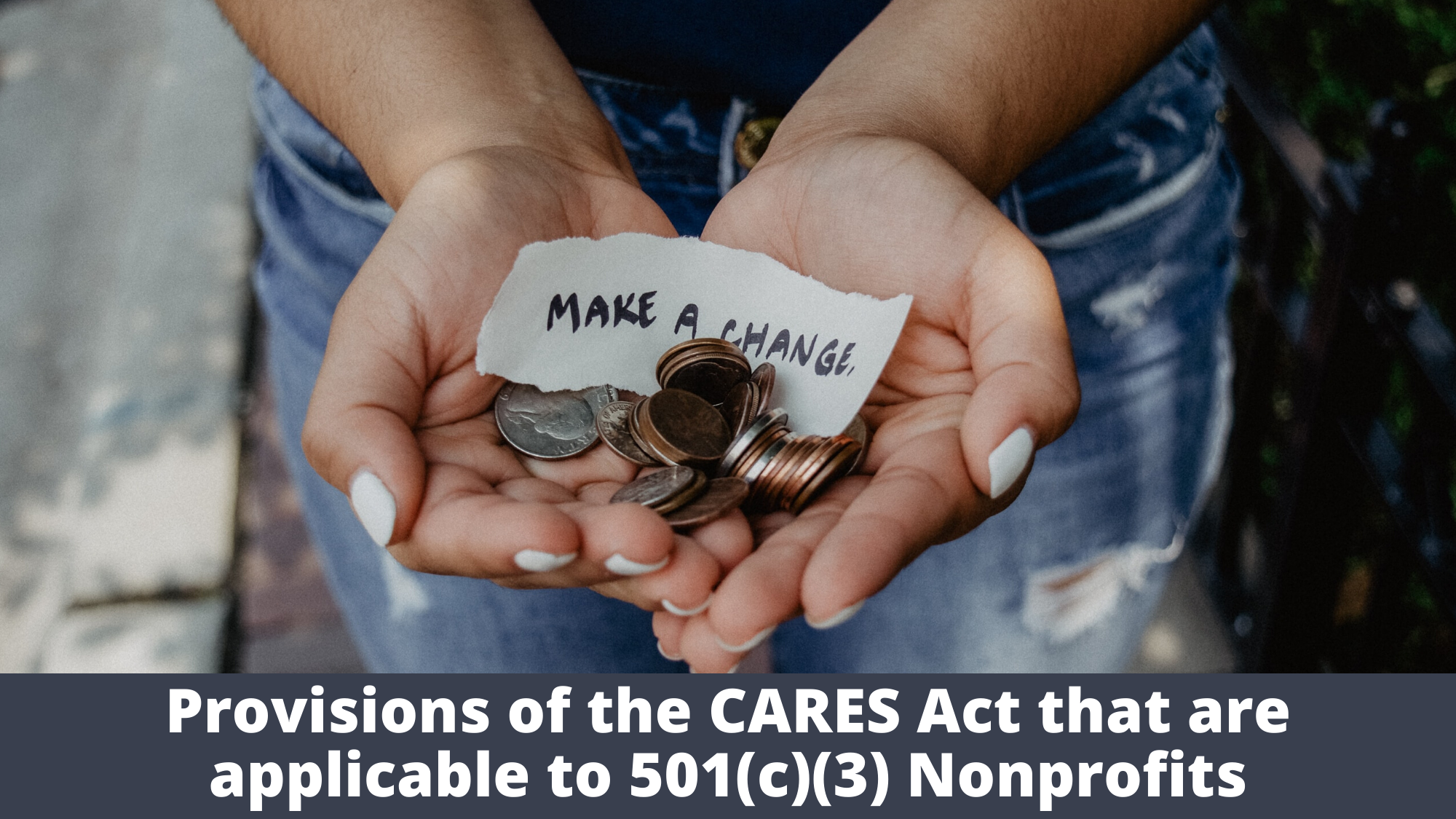Neil Bradley, Executive Vice President & Chief Policy Officer for the U.S. Chamber of Commerce, highlighted the provisions of the CARES Act that are applicable to 501(c)(3) nonprofits. The major provisions include delay of payroll tax remittance, Employee Retention Credit, Paycheck Protection Program, SBA Economic Injury Disaster Loans, and paid sick and FMLA leave (Phase 2).
Delay of payroll tax remittance delays payment of employer payroll taxes between now and 1/1/21 (half due 12/31/21 and the other half due 12/31/22) and does not apply to employers who have loans forgiven under the Paycheck Protection Program. This is a deferral and is an opportunity to hold on to employer payroll taxes while paying later.
The Employee Retention Credit is targeted to employers who had to partially or fully shut down or with 50% drop in gross receipts in a quarter compared to prior year. The shutdown must apply to all aspects of a nonprofit organization. This is a refundable tax credit for 50% of wages (including employer health plan expenses) up to $10k per employee. Employers are not eligible if they receive a Paycheck Protection Program loan.
 Paycheck Protection Program is a loan equal to 2 ½ months of average payroll but less than $10M and is available to 501(c)(3) nonprofits with less than 500 employees. Loan converts to a grant equal to the amount the employer spends on payroll, rent, interest on mortgage, and utilities for the 8 weeks after the origination of the loan. Congress’ goal is to provide money to employers for them to keep supporting their employees. Employers cannot cut salaries more than 25%. Loan forgiveness will be reduced proportionately if the employer reduces the number of employees. For example, if you cut your employee count by 10% then you would lose 10% of forgiveness. If an employer already let go of employees, they can avoid a reduction in forgiveness if they bring employees back and reinstate wages within 30 days and maintain until June 30.
Paycheck Protection Program is a loan equal to 2 ½ months of average payroll but less than $10M and is available to 501(c)(3) nonprofits with less than 500 employees. Loan converts to a grant equal to the amount the employer spends on payroll, rent, interest on mortgage, and utilities for the 8 weeks after the origination of the loan. Congress’ goal is to provide money to employers for them to keep supporting their employees. Employers cannot cut salaries more than 25%. Loan forgiveness will be reduced proportionately if the employer reduces the number of employees. For example, if you cut your employee count by 10% then you would lose 10% of forgiveness. If an employer already let go of employees, they can avoid a reduction in forgiveness if they bring employees back and reinstate wages within 30 days and maintain until June 30.
A normal, traditional bank is your first stop for this program as it is designed to go through private SBA-7A lenders as they qualify to offer this on behalf of the government. The government is opening this up to all FDIC and credit unions who can also offer this, and will have loans available for people to borrow beginning on Friday.
Make sure you understand the perimeters for the forgiveness and what the law expects from you to achieve that forgiveness. Calculate how much are you spending the 8 weeks after the loan originates and maintain employee headcount and keep them at 75% of pay. It does not differentiate between full and part-time as long as they are on your payroll. Independent contractors that you send a 1099 do not qualify for you.
This is the most generous program and is focused on what you are doing the next 30 days and through June 30 to maintain current employee headcount and payroll.
The SBA Economic Injury Disaster Loan is available to non-profits, including faith-based organizations with less than 500 employees. It is up to $2M working capital loan, 2.75% for nonprofits, for up to 30 years. Loans are based on credit score with payments deferred up to one year. A new aspect in CARES is a $10k emergency grant if you specify you have immediate needs and is supposed to be supplied to you in three days. It does not have to be repaid, however, it interacts with Paycheck Protection Program and if you get both they’ll fold them in together.
Application from Phase 2 paid sick and family leave requires employers with less than 500 employees to provide 10 days of paid sick leave if related to COVID 19. Payment up to the maximum is reimbursed by the federal government, and the Treasury is working on giving advances to manage paying sick leave. Leave is at paid regular rate with max of $511/day if taking care of self; 2/3 pay max of $200/day if caring for family member. Businesses with less than 50 employees may be exempt from providing leave related to caring for a child due to school closures if providing leave threatens the viability of the business. Paid sick leave is not available if employee can telework.
Most of these programs are available until end of calendar year 2020. Review the U.S. Chamber of Commerce Coronavirus Emergency Loans Guide and Checklist for Small Businesses and Nonprofits before seeing your lender. Here is a video of Neil Bradley explaining these details.



